Redmi Note 13 Pro+ vs. Redmi Note 13 Pro: Which should you buy?
Xiaomi is moving up a category with its best-selling phones, but there's still a lot to like.

All about the design
The Redmi Note 13 Pro+ doesn't have anywhere as good a value as earlier models in the series. Xiaomi instead took a leaf out of Samsung's playbook, and decided to target the mid-range segment with the device. To that effect, you get a new design aesthetic with a dual-curved screen and rounded edges that may just be the best in this segment. It also holds up much better at gaming than last year, the 120Hz AMOLED screen is terrific, and the 200MP camera at the back takes good photos. That said, you miss out on quite a lot: it still runs MIUI based on Android 13, the wide-angle lens and macro modules are useless, it won't get software updates on time, and there's plenty of bloatware out of the box. If you want a decent mid-ranger, there are much better alternatives available.
Pros
- Great new design
- Vibrant 120Hz AMOLED panel
- Much better power than last year's model
- In-screen sensor
- IP68 dust and water resistance
- All-day battery with 120W charging
Cons
- Runs Android 13 out of the box
- Auxiliary cameras serve no utility
- Video recording is intentionally hobbled
- Slow software updates
- Lot of bloatware
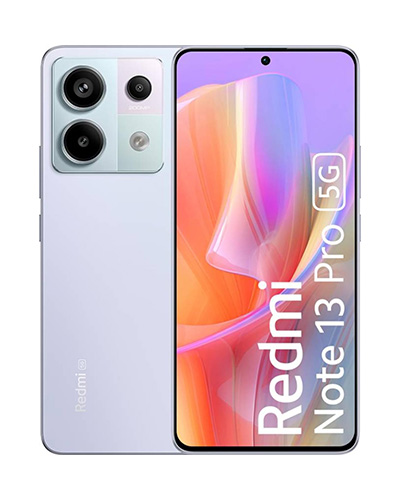
A better value
The Redmi Note 13 Pro has the same drawbacks as the Pro+ variant: it also runs outdated software, won't get updates on time, has plenty of bloatware, and the auxiliary cameras aren't worth your time. But there are a few redeeming qualities; you get the same vibrant AMOLED panel — but with flat sides — the same 200MP camera at the back, a bigger battery, 67W charging tech, and a much better value. If you're used to MIUI and don't want to switch to another brand, the Redmi Note 13 Pro is the obvious choice this year.
Pros
- Same 120Hz AMOLED panel as the Pro+ model
- Same 200MP camera at the back
- Bigger battery with 67W charging tech
- In-screen sensor
- Decent overall value
Cons
- Only IP54 ingress protection
- Doesn't come with Android 14 out of the box
- Auxiliary cameras aren't worth your time
- Slow software updates
- Lot of bloatware
Redmi Note 13 Pro+ vs. Redmi Note 13 Pro: Design and screen
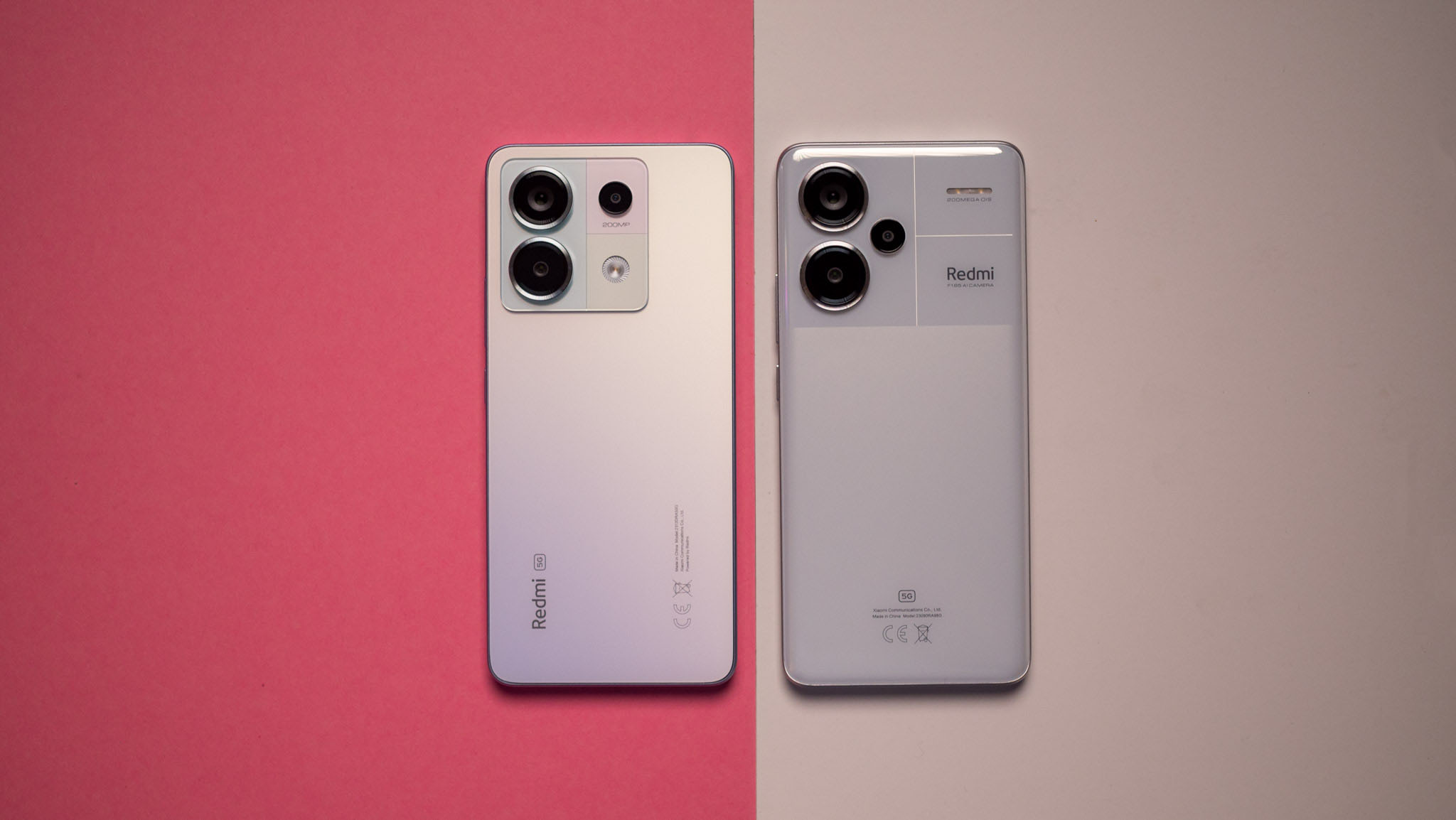
Xiaomi doesn't like design consistency, so much so that even though these two devices are in the same series, they look nothing alike. The Redmi Note 13 Pro+ has an elegant design that's on par with flagships, with a minimalist two-tone pattern at the back and smooth curves throughout. The big talking point is the dual-curved screen; this makes the device look much more upmarket, and the aluminum mid-frame with matte coating, rounded edges, and a sleek design around the camera modules means this is a design that will turn heads.
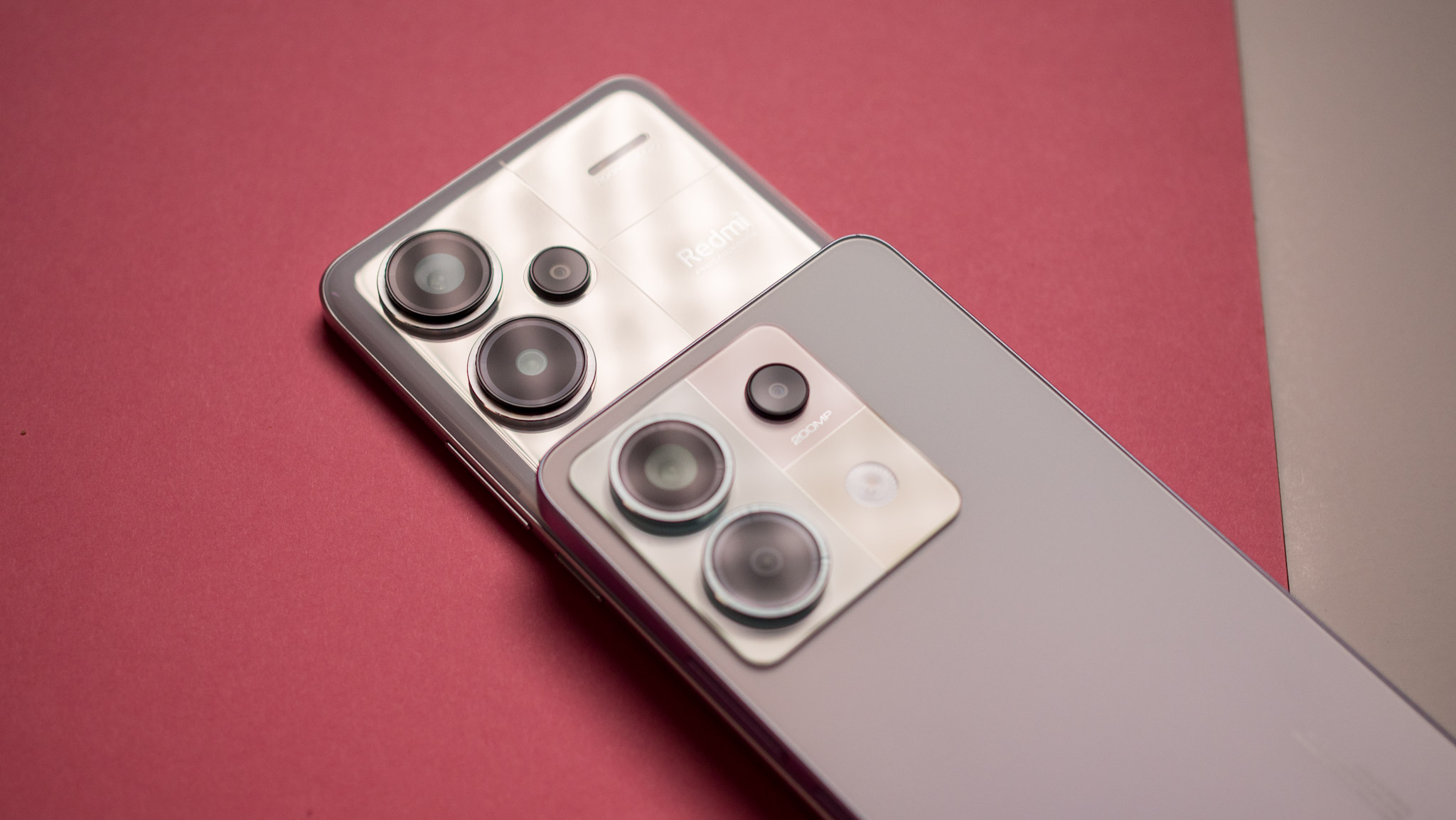
Xiaomi did a good job with the in-hand feel, and overall, the Redmi Note 13 Pro+ looks every bit as premium as the Xiaomi 13 Pro while still costing about half as much. Another change this year is the inclusion of an in-display fingerprint sensor, a long overdue update that's available on both devices. The sensor sits a little lower on the screen — making it just that bit more awkward to access — but other than that, this is a welcome move.

On that note, the Redmi Note 13 Pro+ gets IP68 dust and water resistance as well, and this gives the device much better resistance against the elements. The Redmi Note 13 Pro, meanwhile, gets IP54 ingress protection, and while that is decent, I would have liked to see IP68 on this phone as well.

The Redmi Note 13 Pro looks good as well, but it doesn't have quite the same presence as the Pro+ version. The phone has a traditional camera island at the back with pastel colors, and the design is otherwise muted. Xiaomi went with boxy sides, and this makes holding and using the phone uncomfortable — the Pro+ holds up much better in this area.
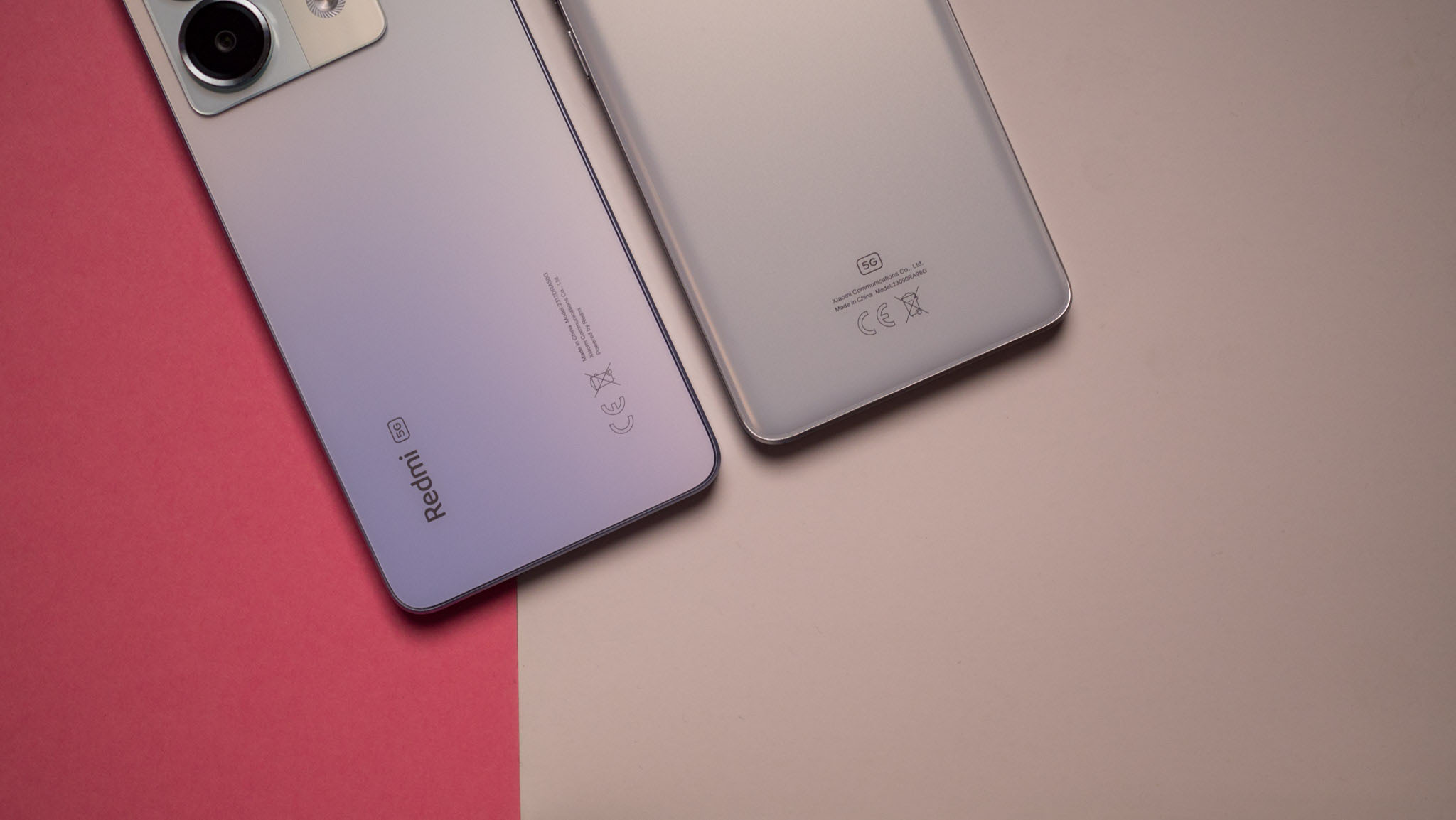
Even though the Redmi Note 13 Pro is thinner and lighter than the Pro+ model, you just don't get that feeling when using both devices next to one another, and Xiaomi really should have used the same design across the series this time. The brand's reasoning for not doing so is to provide a model with a flat panel, and that's what you get on the Pro.
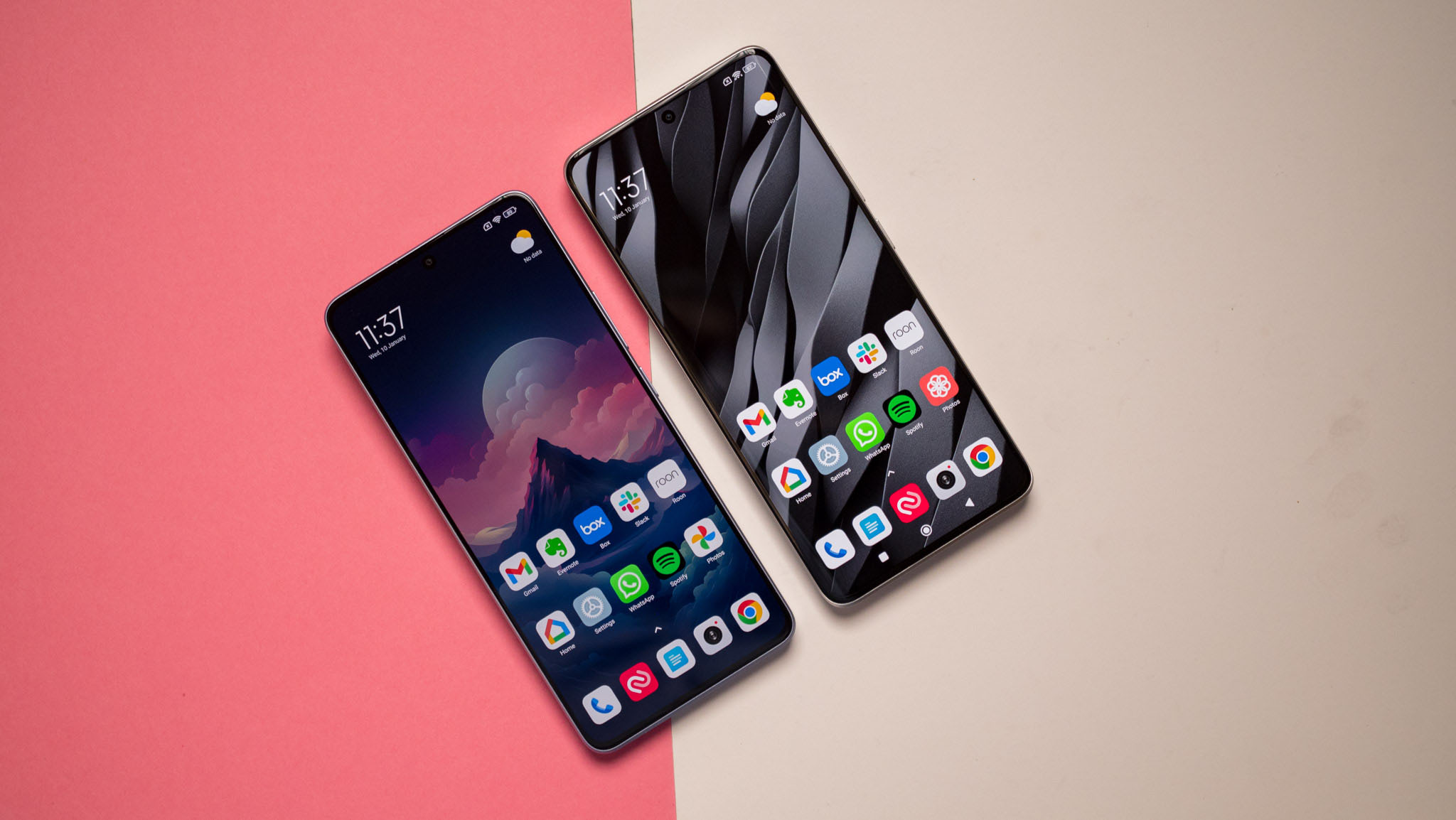
While the design is very different, both phones share the same 6.67-inch AMOLED panel with 120Hz refresh. The screen goes up to 1,800 nits while viewing HDR content, has Dolby Vision, and is easily one of the best in this segment. Both devices also get Corning's Gorilla Glass Victus covering the panel, and there's stereo sound.
The screen has excellent colors and contrast levels, and while the always-on mode doesn't quite work as advertised, that is the only drawback in this area. Other than that, you get a terrific AMOLED panel that holds up incredibly well in daily use, and while streaming movies and playing games.
Get the latest news from Android Central, your trusted companion in the world of Android
Redmi Note 13 Pro+ vs. Redmi Note 13 Pro: Hardware
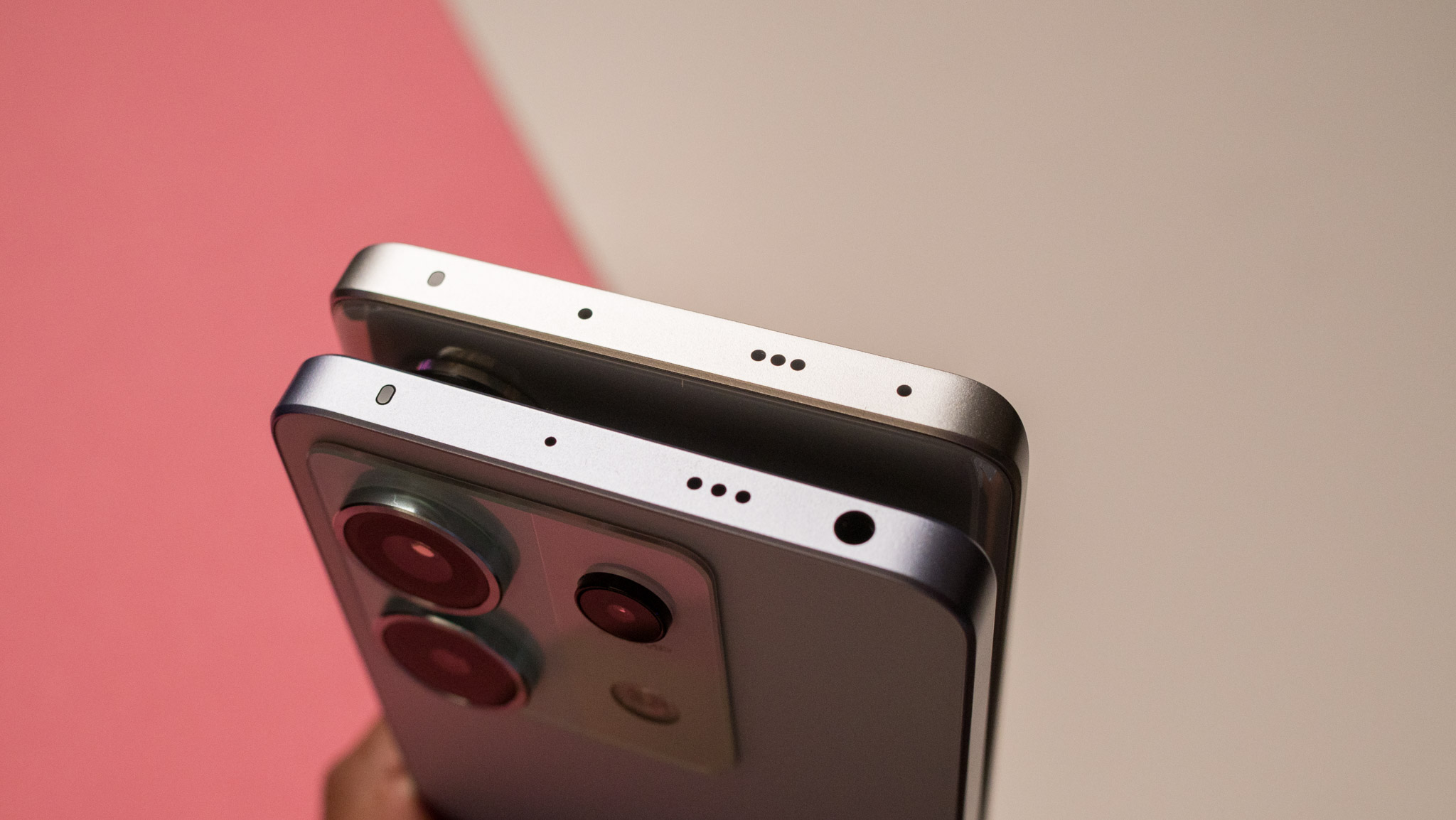
Similar to the design, Xiaomi isn't offering the same hardware package here. The Redmi Note 13 Pro+ is powered by the MediaTek Dimensity 7200 Ultra, while the Redmi Note 13 Pro comes with the Snapdragon 7s Gen 2 instead. In my testing, I found the Pro+ model to be faster in daily use as well as gaming, and although the Pro variant also has a lot to offer, it doesn't quite deliver the same caliber of performance in demanding games.
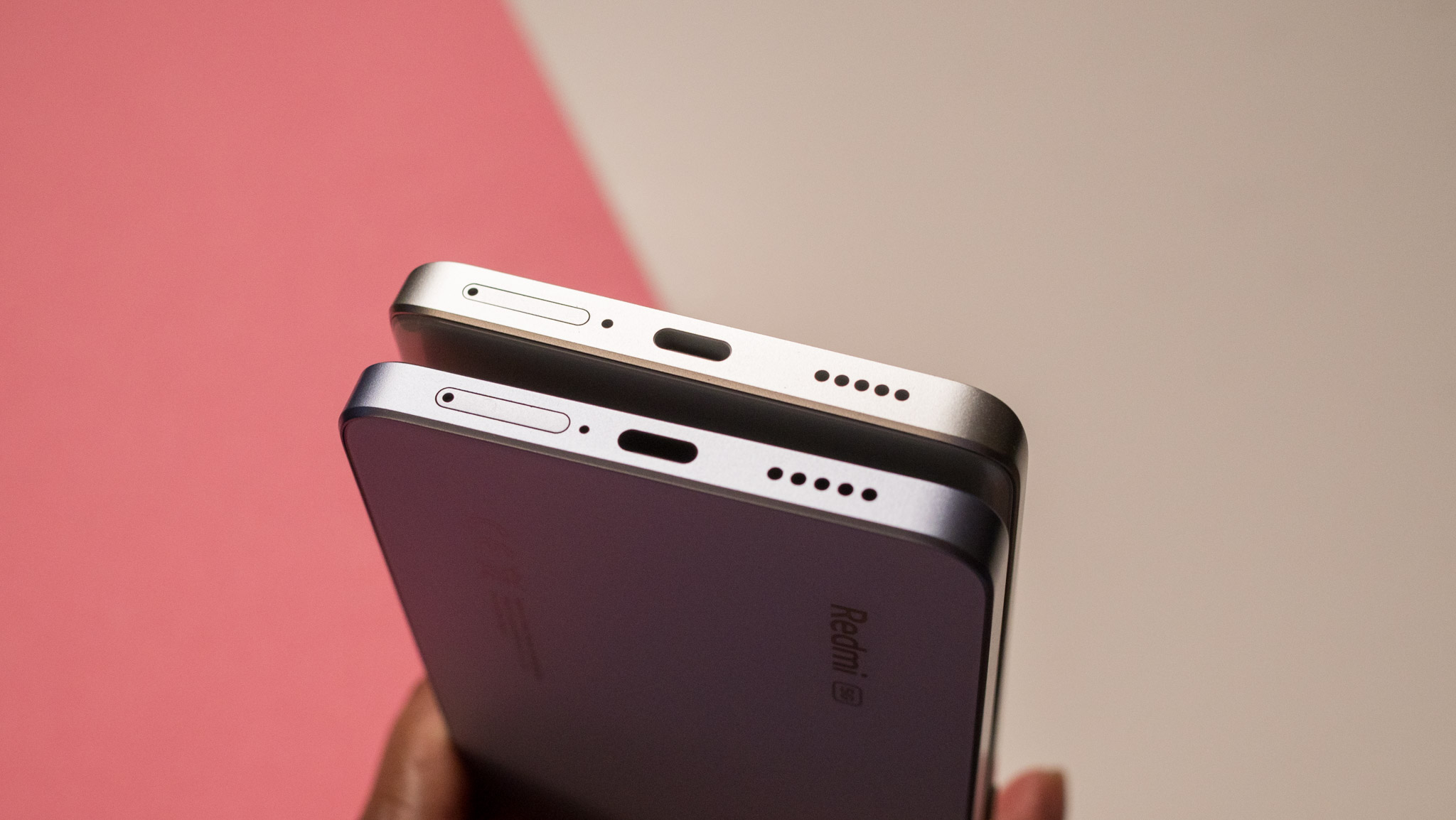
The Redmi Note 13 Pro+ is sold in a single 12GB/512GB variant in the U.K., but in most global markets — including India — it is available in 8GB/256GB. 12GB/256GB, and 12GB/512GB configurations. In a similar vein, the Redmi Note 13 Pro is available in an 8GB/256GB option in the U.K., and in countries like India, it's sold in 8GB/128GB, 8GB/256GB, and 12GB/256GB versions.
The ideal choice would be to get the Redmi Note 13 Pro with 8GB of RAM and 256G of storage, and it's good that Xiaomi is selling this as the default option in the U.K. What's particularly irksome about the hardware of the Redmi Note 13 Pro is that it has a Wi-Fi ac modem; this is an asinine limitation that shows how short-sighted Xiaomi is at times.

Switching over to the battery, the Redmi Note 13 Pro+ has a 5000mAh battery with 120W charging tech, and the Redmi Note 13 Pro has a marginally bigger 5100mAh battery but has 67W charging instead. Honestly, this isn't a big deal, because even the Pro+ model doesn't go over 67W unless you go into the settings and enable the Boosted charging mode. Battery life is about the same on either device, and you'll easily get over a day's worth of use consistently.
Redmi Note 13 Pro+ vs. Redmi Note 13 Pro: Cameras
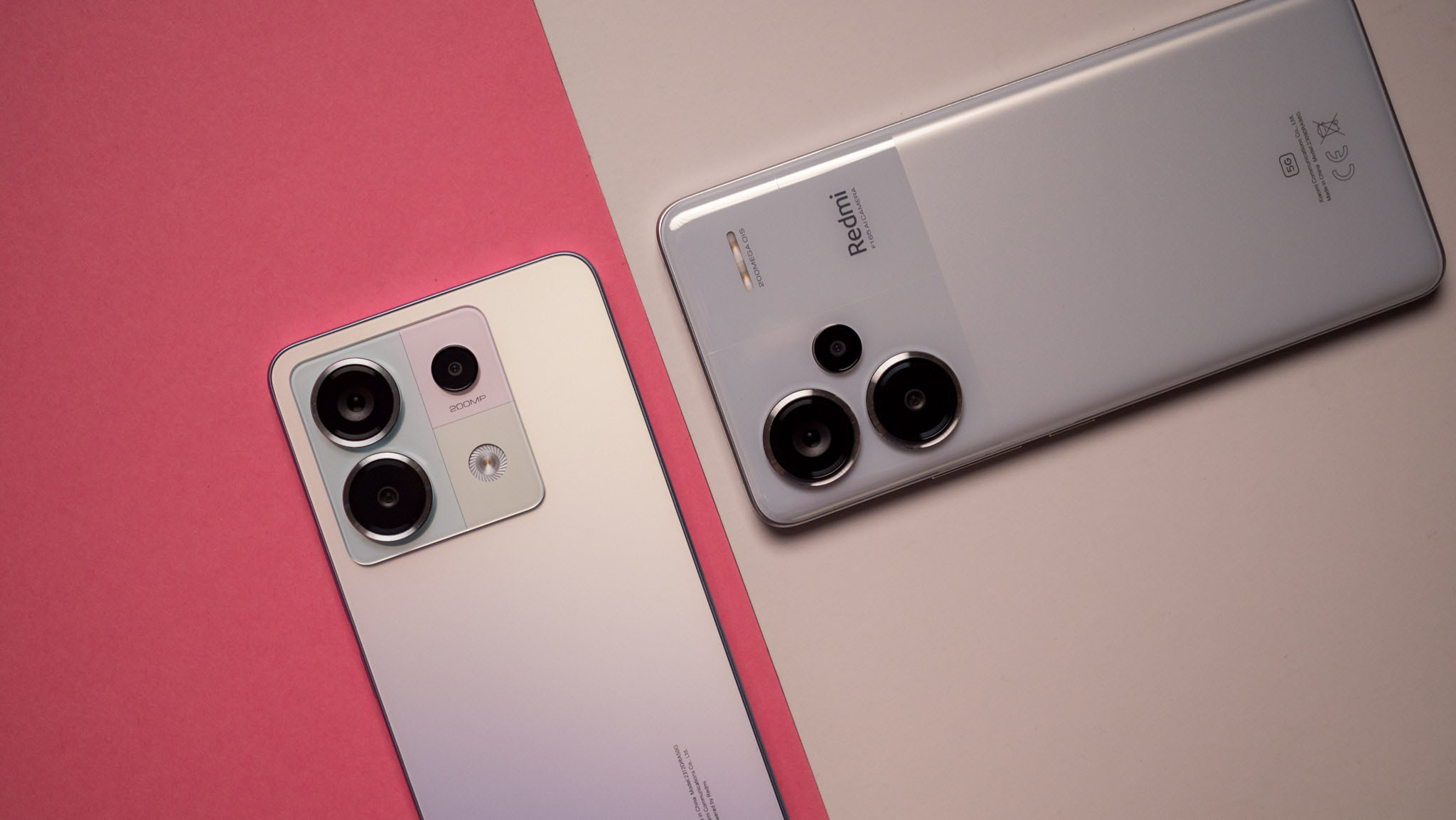
Xiaomi is using the same 200MP camera on either device, and the main camera gets OIS. Both devices also get an 8MP wide-angle lens and a 2MP macro lens, and a 16MP selfie camera that doesn't quite pass muster. In fact, other than the main camera, you may as well not bother with the rest of the sensors — they're just not good enough in the mid-range segment.
Video recording is similarly restrictive, with Xiaomi limiting 4K recording to 30fps; this is in spite of the cameras and the underlying hardware able to shoot content at 60fps without any issues.
Both phones take identical shots with the main 200MP camera, and you get decent images in daylight situations, offering plenty of detail and good colors. They're not as great in low-light scenarios, and you need to use the Night mode to get usable shots.
Xiaomi's failure to address issues with the auxiliary sensors means these devices aren't anywhere as good as other mid-rangers, and it could easily have been avoided.
Redmi Note 13 Pro+ vs. Redmi Note 13 Pro: Software

There's literally no difference in the software package on both phones. You get MIUI 14 based on Android 13 out of the box, and while Xiaomi says it will deliver the Android 14 update sometime in Q1 2024, I'm doubtful of its claims. It did a similar thing last year with the Redmi Note 12 series as well, and those devices didn't switch to Android 13 until Q2 2023. So if you're eyeing either of these phones, know that you don't get the latest Android version out of the box, and there's a lengthy wait to receive it.
MIUI 14 also has a lot of bloatware out of the box, and while this was excusable in the past as Xiaomi basically delivered the best value you could get in the budget segment, that is no longer the case. These devices are aimed at the mid-range category, and they should not come with any bloatware.
Otherwise, the software is identical to any Xiaomi phone released in the last 12 months, and you get a decent amount of customizability along with a lot of overt styling that may not be to everyone's tastes. Xiaomi really needs to overhaul its interface, and the brand continues to drag its feet in this area while other manufacturers make tangible strides forward.
Coming to software updates, the Redmi Note 13 Pro+ will get three Android OS updates along with four years of security patches, while the Redmi Note 13 Pro will receive two Android OS updates along with three years of security patches. It's annoying that both models don't get the same long-term update guarantee, so if you need at least three updates, you will need to pick up the costlier model.
Redmi Note 13 Pro+ vs. Redmi Note 13 Pro: Which should you buy?
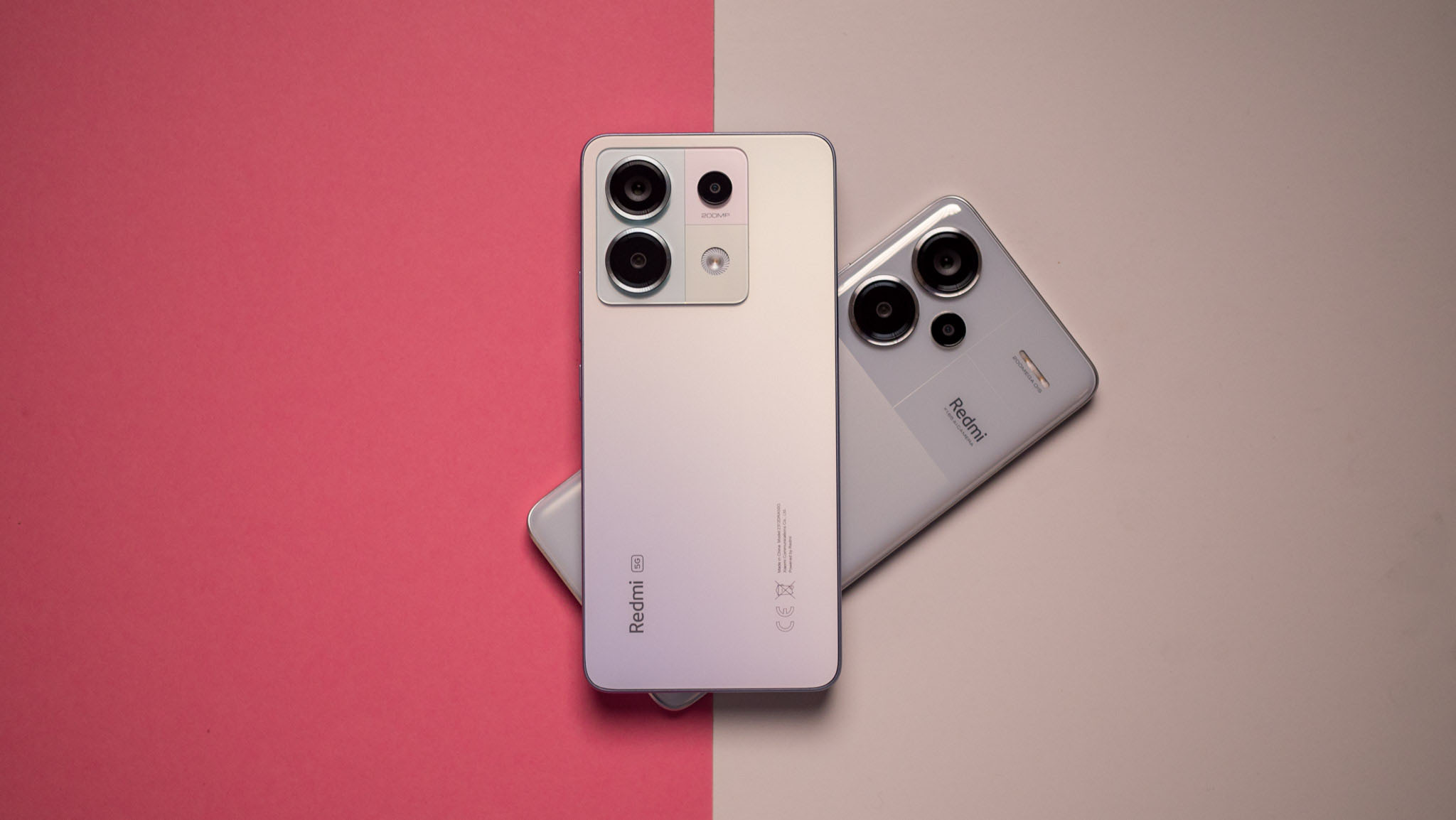
I've always been a fan of Redmi Note devices because of their ability to deliver a great value, but that hasn't been the case for two years now. Xiaomi is instead chasing after the likes of the Galaxy A54 and Pixel 7a with these phones, and that strategy may ultimately haunt the brand.
While the Redmi Note 13 Pro+ has a gorgeous design, vibrant AMOLED screen, and a large battery with 120W charging, Xiaomi's software choices bring it down. Don't get me wrong; it's still a good overall hardware package, but continual failings on the software front means it is overshadowed by its rivals. If you don't mind the fact that it won't switch to Android 14 until later in the year, then yes, this is a great choice.
That brings us to the Redmi Note 13 Pro. While it shares the same software foibles, you get a better value, and the phone has the same 120Hz panel and 200MP camera at the back. The only omission is the additional software update, and if that isn't an issue, I'd suggest getting the Redmi Note 13 Pro.
As annoying as it is that Xiaomi isn't offering as good a value, I'd take the Redmi Note 13 Pro+; it is on par with the best Xiaomi phones when it comes to the design, and you get a good camera at the back and decent hardware that's great in daily use. You'll have to settle for outdated software on both phones, so you may as well pay a little more and get the phone that looks great, and has more storage out of the box.

All about the design
The Redmi Note 13 Pro+ has one of the best designs of any mid-range phone, and it looks unmistakably premium. You also get a vibrant AMOLED panel, great 200MP camera at the back, large battery with 120W charging, and good internal hardware. Where things don't measure up is the software, and the Redmi Note 13 Pro+ is behind its rivals in this area. But if you don't mind the look of MIUI and want better hardware, there's a lot to like with the phone.

A better value
The Redmi Note 13 Pro is a good choice as it still has a decent value, and you get the same screen and camera as the Pro+ model. I don't like the design too much, and you get one fewer software update than the Pro+. But the value offsets those drawbacks, and if you want to stay in the Xiaomi ecosystem and are looking to upgrade this year, you should get the Redmi Note 13 Pro.

Harish Jonnalagadda is Android Central's Senior Editor overseeing mobile coverage. In his current role, he leads the site's coverage of Chinese phone brands, networking products, and AV gear. He has been testing phones for over a decade, and has extensive experience in mobile hardware and the global semiconductor industry. Contact him on Twitter at @chunkynerd.
